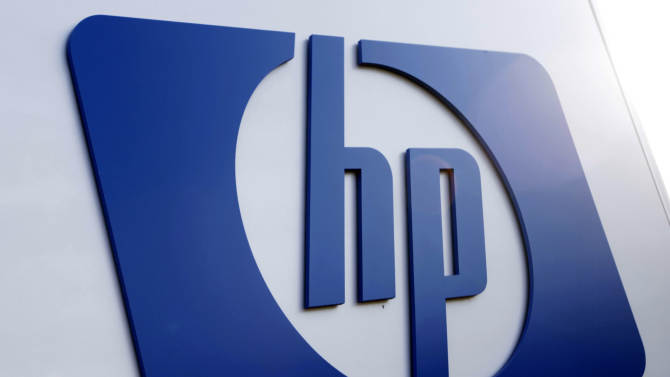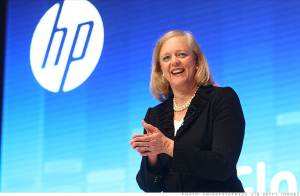H-P’s split-up plan shows financial engineering still feeds the bu
October 6, 2014
As the stock market was skidding to the end of September, one of the blows to investor confidence came from challenges to some aggressive financial-engineering efforts.
The Obama administration set new rules intended to thwart some “tax inversion” cross-border mergers. And a federal court ruled against a hunting party of hedge funds who were seeking to force bigger payouts from Fannie Mae (FNMA) and Freddie Mac.
Yet while these particular regulation-hopping maneuvers have met some resistance, Corporate America remains firmly in financial engineering mode – and will probably stay in it until this bull market ends.
With Hewlett-Packard Co. (HPQ) moving to cleave itself in two less than a week after eBay Inc. (EBAY) announced it would spin off PayPal to shareholders, it’s clear that CEOs and their investment bankers are hot for reorganizing themselves in a way that pleases a hard-to-impress market five-plus years into a steep ascent.
In addition to spinoffs, the corporate merger calendar is busy and companies continue to search for ways to capture the value of embedded assets, whether real estate or patents. As noted here over the summer, this is typical late-bull-market action.
The conditions that drive companies in this direction remain firmly in place:
-The profit cycle is mature, with earnings breaking to new all-time highs each of the past few years and profit margins settling near historic highs. Meantime, broad demand trends and pricing power are muted, leaving growth-starved big companies looking to liberate faster-growing units or cast off sluggish ones as a way to wring more value from the sum of their parts.
-Activist investors are armed with billions and are dangerous to the executives of sleepy or inefficiently structured companies. Aside from angling for huge stock buybacks, pressing for a breakup or spinoff of diverse corporate giants is a favorite line of attack for these investors.
-Professional investors crave new companieswith fresh stories and clear strategic priorities to invest in with the stock market rather picked-over and no longer cheap.
There’s a lot of huffing and scoffing around the emphasis on financial paper shuffling over growth-seeking investments in core businesses. But this pattern is neither new nor surprising at this stage of the game.
If a company such as H-P – the product of dozens of industry-spanning acquisitions and an inconclusive multiyear restructuring – hasn’t managed to grow this far into an economic expansion, it’s logical that CEO Meg Whitman would seek to bust it up. Its stock had already tripled in less than two years, leaving few obvious operational ways to placate current and future investors. This doesn’t mean the breakup will work any magic, as Aaron Pressman points out here – but it makes sense that Whitman is trying this, and it lifted H-P shares nearly 5% on the day to add $3.4 billion in market value.
The entire sweep of the 1990s bull market and corporate-productivity boom was accompanied by a constant corporate-breakup theme. The telecom industry splintered apart, General Motors Corp. (GM) and Ford Motor Co. (F) hived off their car-parts divisions, and multi-industry conglomerates such as ITT were carved up.
Spinoffs have reliably produced index-beating returns over the years, and stand as one of the handful of market anomalies that continue to “work” long after they’ve been identified.
While the companies always say a spinoff will enable new management to focus and compete better, the stocks tend to perform well in large part because they begin life as orphans. While part of a bigger empire, they were overloaded with corporate expenses and company leadership had little incentive to demonstrate their full potential at the outset.
Murray Stahl, co-founder of asset manager Horizon Kinetics, is a longtime value investor who is closely associated with the spinoff theme. He likes to say that a spinoff is the one kind of stock that ends up in a portfolio without the owner ever having decided to buy it. Index funds and other investors are therefore more likely to be mechanical sellers than buyers. So the stocks tend to be undervalued until the company begins improving profitability and attracting a new set of appreciative shareholders.
And, frequently enough, these castoff divisions eventually find themselves recombining with some other buyer or merger partner down the road. The biggest acquisition of the day was Becton Dickinson Co.’s (BDX) $12.2 billion deal for CareFusion Corp. (CFN) – which was spun off from Cardinal Health Inc. (CAH). One of the most heated takeover contests this year was over Hillshire Brands Inc., itself a remnant of the atomizing of the old Sara Lee Corp.
As for H-P, a big part of its soon-to-be-freed enterprise business is the former Electronic Data Systems – founded by Ross Perot, acquired by GM, spun off by GM and then bought by H-P.
H-P also now contains what’s left of both 3Com and Palm – the latter having been a spinoff of the former. Hewlett also spun out Agilent Technologies Inc. (A) in 1999, now a steady performer in the instrument and diagnostics industry with a market value of $19 billion.
Clearly, then, there’s nothing new about this process of breaking up and pairing off again. It’s all about companies trying to tailor new, usually more coherent corporate entities that fit the wish list of a fresh group of investors. The H-P split plan has predictably touched off a game of “Who’s next?” Other tech giants EMC Corp. (EMC) and even Microsoft Corp. (MSFT) will get a look on this basis. Breakup talk has also in the past swirled about Pepsico Inc. (PEP), Citigroup Inc. (C) and even Johnson & Johnson (JNJ).
This is the way things go after a bull market has been rolling a while — and it works pretty well until the music stops.
Search
RECENT PRESS RELEASES
Related Post






